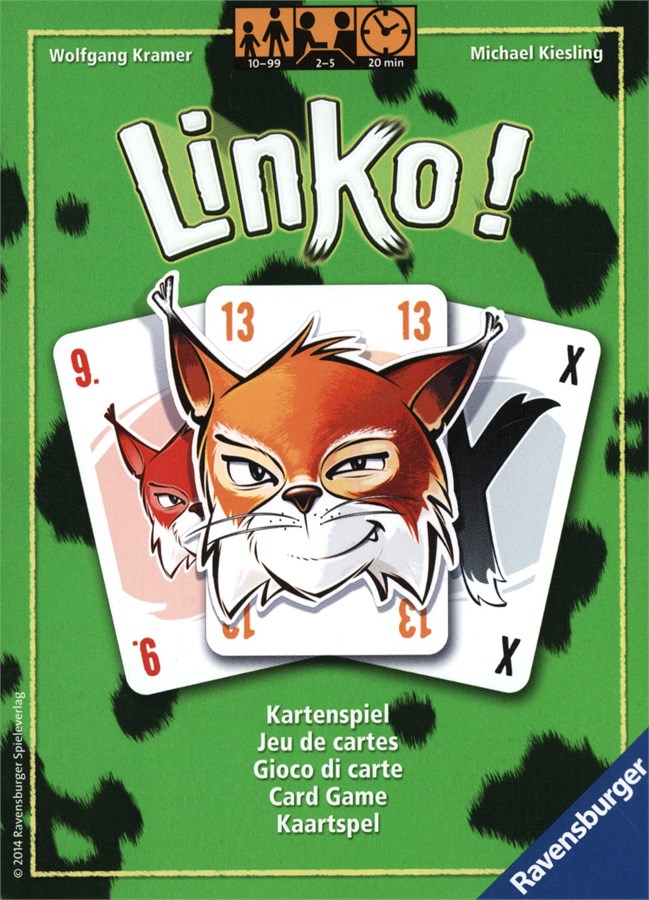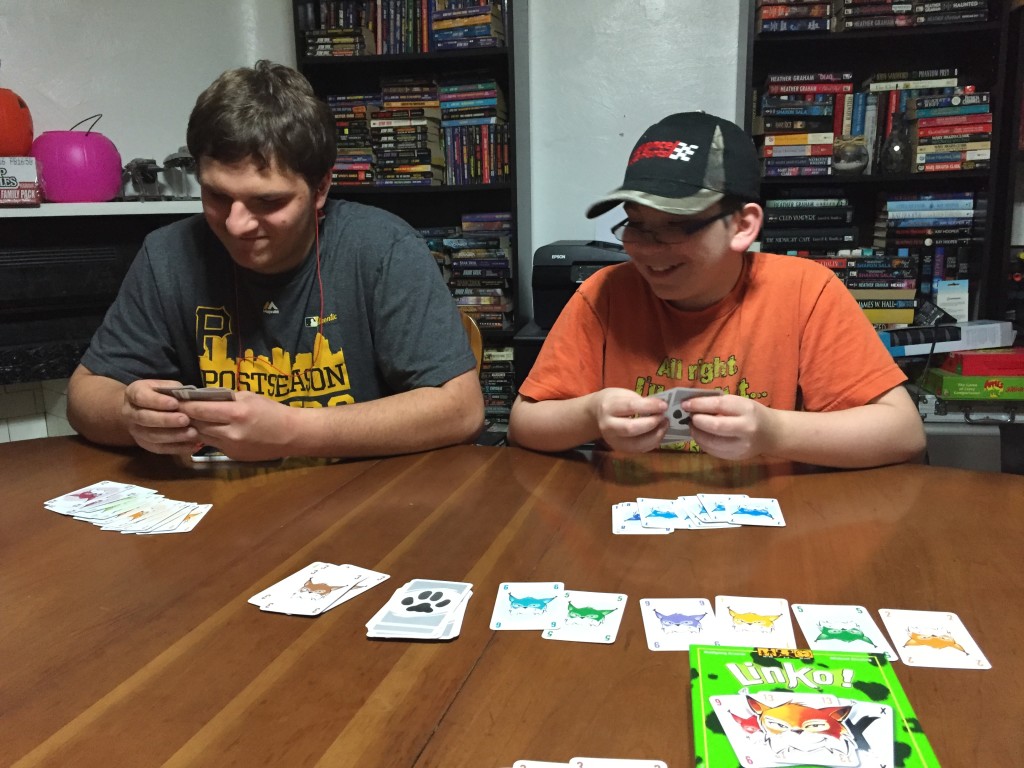“Linko!” (a.k.a. “Abluxxen”) doesn’t discriminate when it comes to card values and scoring. You see, every card you collect, regardless of its value, is worth one point. Collect the most cards and you win, simple as that. Or is it? After a few minutes, you’ll realize that keeping the cards in your pile is actually a lot harder than it looks. Let’s take a quick peek at how this particular card game plays, shall we?
Components
The game includes 104 number cards (8 sets, each from 1-13), 5 joker cards (X’s), 1 Linko card, and a rulebook.
Setup & Gameplay
The youngest player gets the Linko card and goes first but honestly, handing out the Linko card isn’t necessary as players won’t have to worry about taking an equal number of turns when the game ends. The deck of cards is shuffled and each player receives thirteen cards to form their starting hand. Six are dealt face-up in the middle of the table to form a draw pool.
On a player’s turn, they’ll pick a number of a card from their hand, then lay down as many of that number as they want. If a player has three 5’s, for example, they could lay down one, two, or all three 5’s. Any cards played go on top of the previous set, if any exist in their pile.
Once the cards are laid down, they’ll compare the number of cards they laid in the set with everyone else’s top set, going clockwise. Any opponent who has the same number of cards in their set as the one just played will be forced to participate in what comes next. If Player A laid down three 5’s, Player B’s top set was three 2’s, Player C’s top set was three 7’s, and Player D’s top set was four 2’s, then both Player B and C will be involved.
In the above example, Player A will either take Player B’s set and place it into their hand or instead opt to reject it. If the latter, then Player B must either take the set back into their hand or remove them from the game. Should Player B remove the cards from the game or if Player A takes the cards, then Player B must draw that many from the face-up pool or face-down deck. Player A then follows suit with Player C, then ignoring Player D. The face-up pool is replenished once a robbed player draws all of their cards.
This continues until one player runs out of cards or until the deck and face-up pool runs out. Players count the number of cards in their pile (worth one point each) then subtract the number of cards in their hand (minus one point each) to derive a total. Whoever has the highest score, wins!
Editor’s Note: The above doesn’t cover all of the rules found in the manual, but should give you an idea as to how the game is played.
The Review
“Linko!” isn’t half bad as card games go and has a relatively unique card-snatching mechanic to boot (as far as I know it’s unique). The biggest hurdle you’ll have playing this game is getting your mind to wrap around the way the cards resolve when sets interact with one another. It’s not terribly difficult to understand…just different. Luckily, there’s a flowchart in the rulebook that outlines all the if-then’s that are possible when you’re prompted to resolve said instances.
While there is luck in drawing cards of the same number from the outset, you’ll be using a little bit of strategy to build upon these sets to make them difficult to snatch once you lay them down. For example, you might have three 10’s in your hand, but there’s two 10’s in the card row/pool that you’d like to use along with them. You could play a pair of 2’s on your turn as bait for someone else to snatch up, allowing you to restock your hand with the 10’s you wanted. After all, it’s more difficult to steal a set of five cards then it is a set of three. In the above example, your opponents would have to top your set of five 10’s with five 11’s, 12’s, or etc. in order to steal them.
“Linko!” played fairly quickly despite all the card stealing and would make an excellent filler game. The boys seemed to like it whereas the girls weren’t all that impressed. Then again, they do tend to be picky gamers. I personally enjoyed this one and would not only recommend it, but gladly play it again as time permitted.
Final Verdict: 8/10
—


